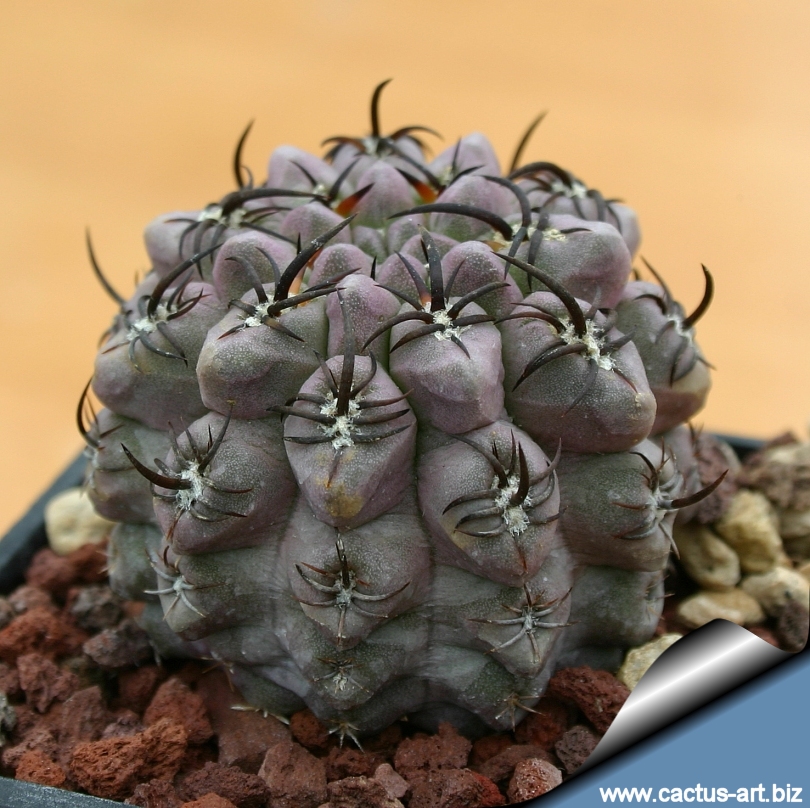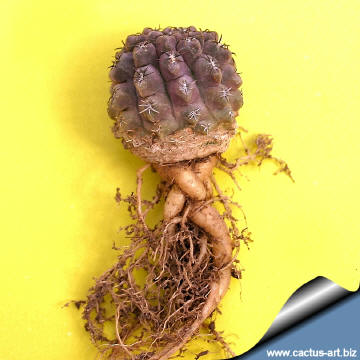|
|

Eriosyce napina ssp. mitis
f. glabrescens
FR710 Totoral Bajo, 03 Atacama, Chile
|
|
Description:
Tiny
geophyte, with
a
solitary
spherical or
flattened stem,
slowly growing atop a thick, underground
taproot,
with a
constriction between the stem and the root. eventually
becoming somewhat
elongated in cultivation.
Stem:
Slow
growing, up to 5-8 cm across,
4-8
cm tall,
the colour of the stem is very variable from one specimen to
another. It can be glaucous-blue, glossy green or dark purple
with brown, olive, grey tones.
Tubercles : Larger than ssp. napina;
Areoles:
Grey.
Radial spines: Variable, from very
short and thin or almost absent (f. glabrescent), to black, recurved, and strong.
Central spines: None or one, strongly bent upward.
Roots: Forms
a
tuberous root system with (usually) a very
large
carrot-like root
Flower: Approx
3,5 cm long, 4-6 cm in diameter, pale yellowish-red with a
silky shine,
buds densely
hairy with brown
wool.
Fruit:
Large, red,
clavate,
wrapped in white
wool.
Phenology: Flowers
already when young,
synchronised flowering of the whole plants
takes place over one or two days, and
they remain open for about three
or four days.
Blossoming time: late spring.
|
|

Root system
|

The colour of the epidermis is very variable,
and ranges from pale blue-grey-green to dark purple.
|

Fruit |

New spines
in spring |
|
Photo
of conspecific taxa, varieties, forms and cultivars of E.
napina. (This
Taxon has lots of synonyms,
with several controversial varieties and
subspecies, and comprises a multitude of
different forms)
|
|


Advertising
|
|
|
|
|